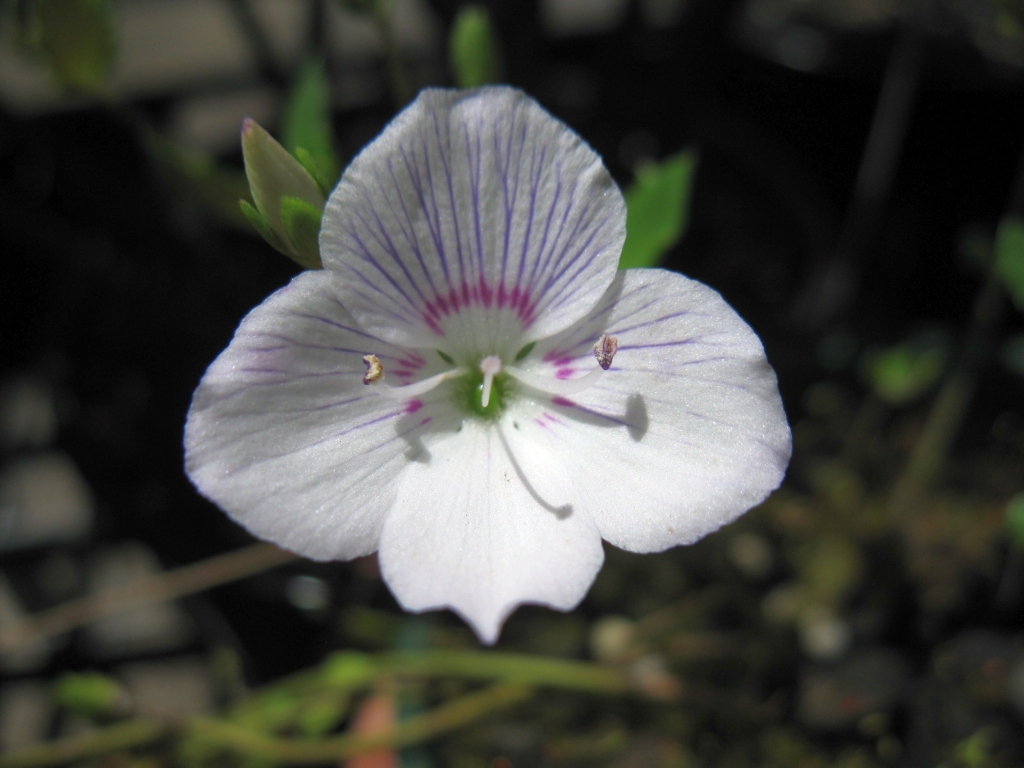Veronica hillebrandii
F.Muell. Coast SpeedwellRhizomatous perennial; branches ascending to erect, to c. 25 cm high, with retrorse to spreading hairs to c. 0.5 mm long, in 2 rows or all around, fine. Leaves ovate (sometimes broadly so), 5–30 mm long, 3–17 mm wide, apex acute to obtuse, base truncate to cuneate, margins with 3–7 pairs of coarse teeth, rarely entire; petiole 1–4 mm long. Racemes in upper axils, 3–12 cm long, mostly 4–10-flowered; peduncle 1–7 cm long; bracts 2–10 mm long; pedicels 5–30 mm long. Calyx-lobes 4–7 mm long, 2–3.5 mm wide in fruit, with short retrorse hairs, often longer and coarser on margins; corolla 8–10 mm long, pale blue to pale lilac or nearly white, the upper lobe broader than others and streaked darker, red at base. Capsule transverse-ovate, 3.5–4 mm long, 3.5–5.5 mm wide, shallowly emarginate to truncate, glabrous; style 5–6.5 mm long. Flowers Nov.–Dec.
Brid, WaP. Also SA, Tas. Extremely rare in Victoria where confined to coastal shrubland, in sand over dune limestone near Cape Bridgewater, Portland area.
A collection labelled 'Curdies River' has not been substantiated since its collection in 1894. It's not known if the original collection is mislabelled or if the species has become locally extinct from the area.
Briggs, B.G.; Barker, W.R. (1999). Veronica. In: Walsh, N.G.; Entwisle, T.J., Flora of Victoria Vol. 4, Cornaceae to Asteraceae, pp. 509–516. Inkata Press, Melbourne.
 Spinning
Spinning
